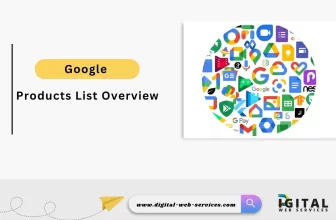
“To win the marketplace, you must first win the workplace.”—Douglas Conant
Technology is the key to employee retention
It is okay to think that hiring new talent is a challenging task. But retaining the best—performing employees is a bigger challenge for employers. Approximately 88% of people worldwide say that their perspective on work—life balance has changed since the onset of the pandemic. With Covid regulations easing out and offices reopening, experts predict a “turnover tsunami” as people become more optimistic about future endeavors.
There are ways a company can create successful strategies that can recruit and retain the best talent in the company. With the digital revolution taking over our lives, even at the workplace, there is no surprise in accepting that the key to employee retention is within technology itself.
What is employee retention?
Employee retention refers to the practice of investing in your employee’s well—being and satisfaction within the company. This huge investment is made to retain the best—skilled people in the company and reduce turnover.
A successful employee retention practice comes with the following three steps:
- Identifying the factors that are causing employees to leave the company
- Creating strategies that address these factors
- Improving the overall experience of your employees
Six factors behind employees leaving their jobs
The following factors have a direct impact on an employee’s job satisfaction in the company:
1. Work—life balance
The most potent reason employees quit or change their jobs is an imbalance in their personal and professional lives. As everyone’s lives are different, the expectations in this area keep dwindling between employees. As a result, it becomes burdensome for employers and HR leaders to match those expectations.
However, if you successfully nail the syntax of a perfect work—life balance, retaining employees will not be a challenge anymore. Employees eventually enjoy working at an office that embraces change and is considerate towards its people.
2. Opportunities
Employees always look for opportunities where they can portray their best skills and work. But if they feel that their contribution isn’t benefiting their career or isn’t recognized, then shifting to a positive work ambiance is inevitable.
3. Recognition
The next step to getting more opportunities is being recognized and rewarded for the previously done work. No matter how autonomous an employee chooses to be, they would like to be appreciated for their work at some point in their career. Therefore, recognizing, rewarding, and encouraging employees at work is vital to the company’s success.
4. Managerial performance
If the company’s top management is disrespectful, inhumane, or incompetent, then potential employees will leave the company without batting an eyelid. But an excellent management team will do everything possible to sustain the same team for the longest time.
5. Cultural inclusivity
Other than the obvious factors of time, money, and opportunities, the colleagues in the workplace impact job satisfaction. The inability to get along or the silly practices among colleagues will decide if one wants to stay in the company for a long time.
Additionally, the company’s policies to tackle bullying and harmful practices at work are a sign of job satisfaction. If your company wishes to retain the right talent, practicing good values and ensuring fair treatment at work would go a long way.
6. Earned income
Bills cannot pay themselves, so money is an obvious and practical approach to being satisfied with the job. They can also be looked at as a way of recognizing the employee’s work. Fair remuneration with the promise of adding more as the quality of work develops is an assurance one needs to stay in the company.
How to use technology to improve employee retention?
1. Influence engagement using social media platforms
A great way to encourage the people in your company to communicate with each other is to connect on social media platforms and interact with colleagues. Social media is gaining more users by the day, and it is the best way to derive the most out of the media.
Additionally, today’s companies need to have an online presence as most people operate on social media. Send out a content creator job template and choose the best out of the applicants. Looking for interested candidates, especially in the younger generation, who can maintain your company’s identity is a great way to identify and retain potential talent in the company.
2. Conduct effective performance appraisals
A robust performance appraisal system will motivate employees to work harder and meet the goals set by their team leaders. Using employee performance software is an effective way to track the performance and progress of employees and recognize the best performers. These performers are who you would want to retain for the long—term.
Additionally, managers can use the data from this software to guide employees about their work status. Maintaining an effective communication channel during the appraisal period will help your staff reach their aspirations and meet company targets.
3. Introduce better communication channels
Employees who have no clear understanding of their tasks and duties for the day will never be able to perform to their best abilities. The demand for better communication channels is high since Covid as people worked remotely. Programs like Microsoft Teams, Skype for Business, and Slack will bridge the communication gap between employees and managers.
With such technology, employees will never miss out on important information and won’t have to deal with back and forth emailing. In addition, a straightforward and stress—free work environment attracts new talent to the company and keeps existing ones satisfied.
4. Offer remote working options
The pandemic has brought about a significant change in how companies work. However, it has made us realize that as long as one uses the right technology, work can be successfully done from any corner of the world.
The availability of project management tools makes it easier for employers to manage their remote teams. In addition, the more options employers have, allowing people to work from home, the more chances there are of them sticking around with the same company.
5. Provide virtual training opportunities
The willingness to do better in the future drives employees to learn more skills in their careers. You can conduct professional development initiatives on systems that support virtual programs so that your employees can upskill themselves from the comfort of their homes.
These virtual training programs can be recorded and kept for future use by employees. If you are keen on investing in your employees with an assured ROI, then virtual training opportunities are the way to refine their skillsets and retain them.
6. Conduct surveys and feedback
The biggest morale killer for employees is feeling that their opinion does not matter to the company they work for. This is why it is essential to conduct surveys and collect feedback from time—to—time.
Many HR technology solutions make it easier for managers to gather information in feedback and surveys from their teams. The data collected will help company leaders to understand how they can serve their people better and ensure the company’s wellbeing.
Final thoughts on retaining employees using technology
There are so many possibilities that can come true in the workplace when the right technology is used. For an impactful employee retention strategy, the HR team should know what people are looking for in a positive work environment. It will result in better business performance, implying that people are keen on working in the same company.
By B Naomi Grace
Digital Web Services (DWS) is a leading IT company specializing in Software Development, Web Application Development, Website Designing, and Digital Marketing. Here are providing all kinds of services and solutions for the digital transformation of any business and website.










